Death and remembrance in Oaxaca
I've been incredibly fortunate to spend three wonderful days (only about half of which was spent working!) with friends in Oaxaca, Mexico, seeing firsthand the celebrations of El Dia de los Muertos — the day of the dead — and what an eye-opening, culturally rich experience it was.
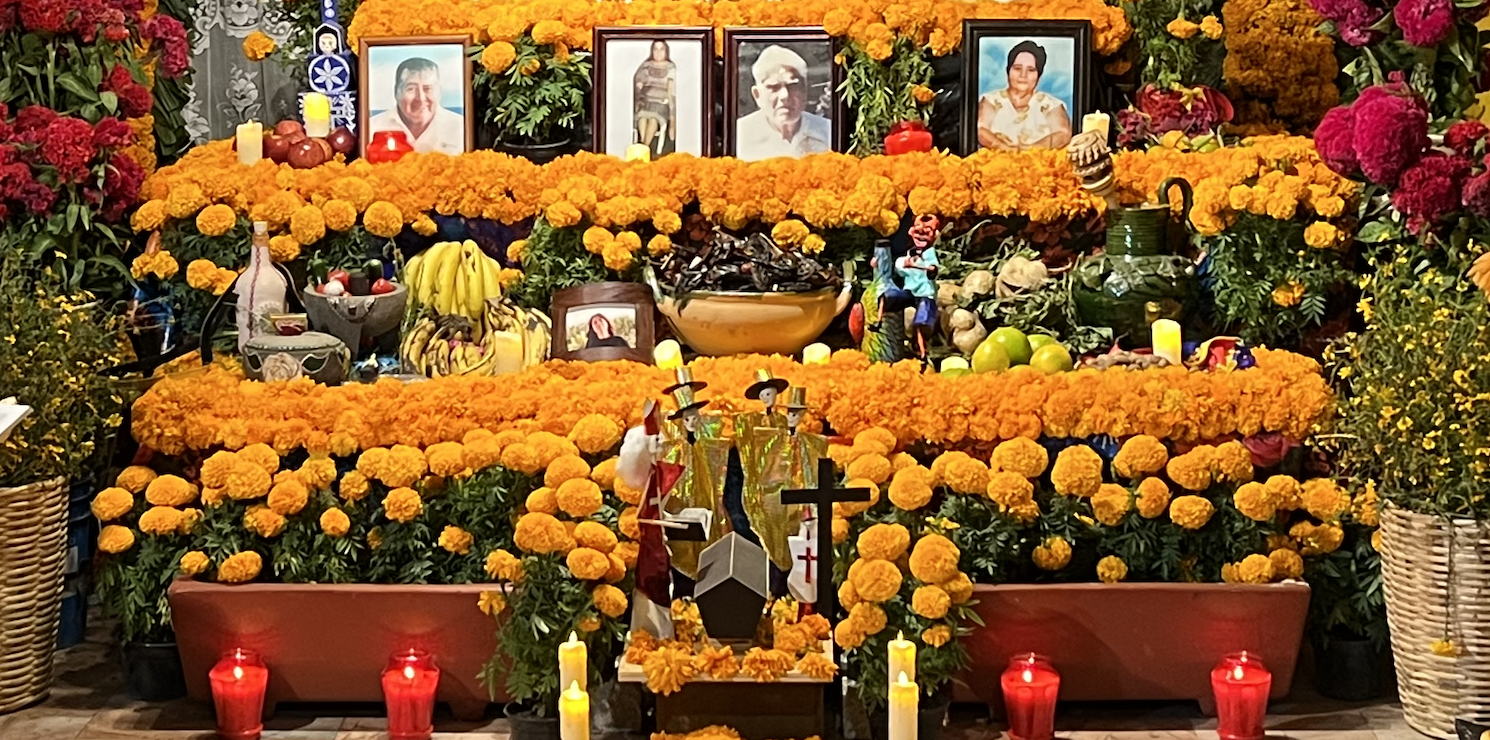
Death is terrible. In funerals we try our best to make light of what's an utterly depressing situation by trying to talk in convincing terms about the afterlife, people going to a better place, meeting their other dead dear ones, heaven, reincarnation (which simply doesn't work in terms of basic arithmetic), clinging to faith that such things might happen despite there being no evidence as such.
The reality is that death really is utterly shit, one of the worst things that can happen, and all of these hopes are really different ways of us trying to sugar coat it or otherwise handle our feelings that have developed over thousands of years of evolution. We struggle with the idea that we are going to turn off and there's quite probably nothing beyond the lights going out. Even now I still wake up at night after experiencing pleasant dreams of my grandma or my dogs or bird, sometimes recalling happy historical events, yet upon realising they are gone shed tears on the pillow before finally calming down and going back to sleep again. Because it's so emotional for me, I try not to think or talk too much about loved ones who have passed because of the negative emotions that it brings.
Some Mexicans have another way of dealing with this, one that's seems to be better in many ways and slightly controversially dates back to the Aztecs. I've been incredibly fortunate to spend three wonderful days (only about half of which was spent working!) with friends in Oaxaca, Mexico, seeing firsthand the celebrations of El Dia de los Muertos — the day of the dead — and what an eye-opening, culturally rich experience it was.
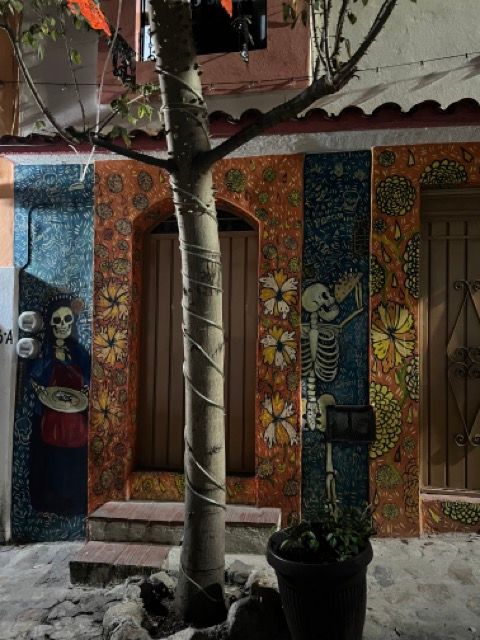
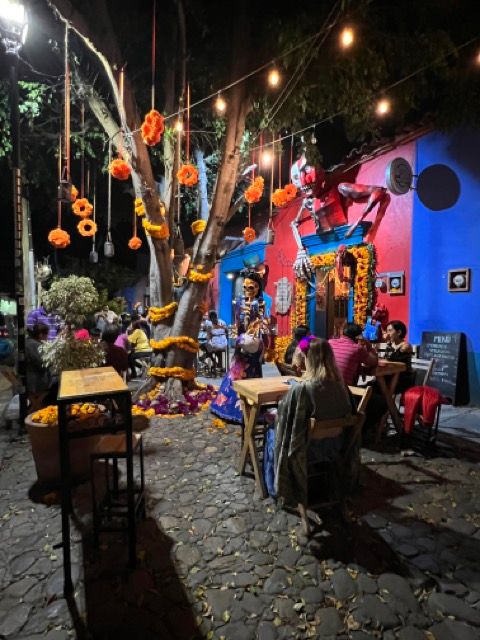
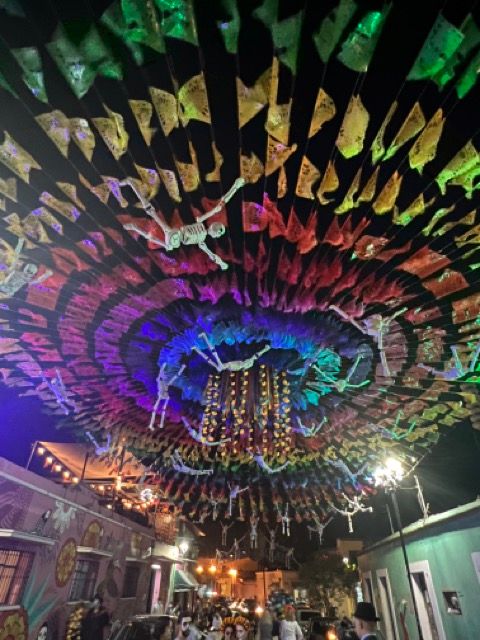
Halloween and Day of the Dead have two obvious things in common: Firstly, they both occur around the same time of year, as the seasons transition from summer to autumn which is likely not a coincidence: That transition around the end of October was the end of the harvest and the start of the cold season which was the toughest time of year for people to survive through. Secondly, these days both involve some sort of costume or fancy dress in modern times. Beyond that though they couldn't be more different.
Halloween is a pagan festival about evil spirits, ghosts, and wearing costumes to ward them off. Kids go around and trick or treat, we do fancy dress parties and, as far as I can recall, that's about it. The Day of the Dead isn't about fear or mourning — it is a joyful celebration where time is spent remembering ancestors, telling stories, celebrating their lives and passing these memories and stories on to the next generation.
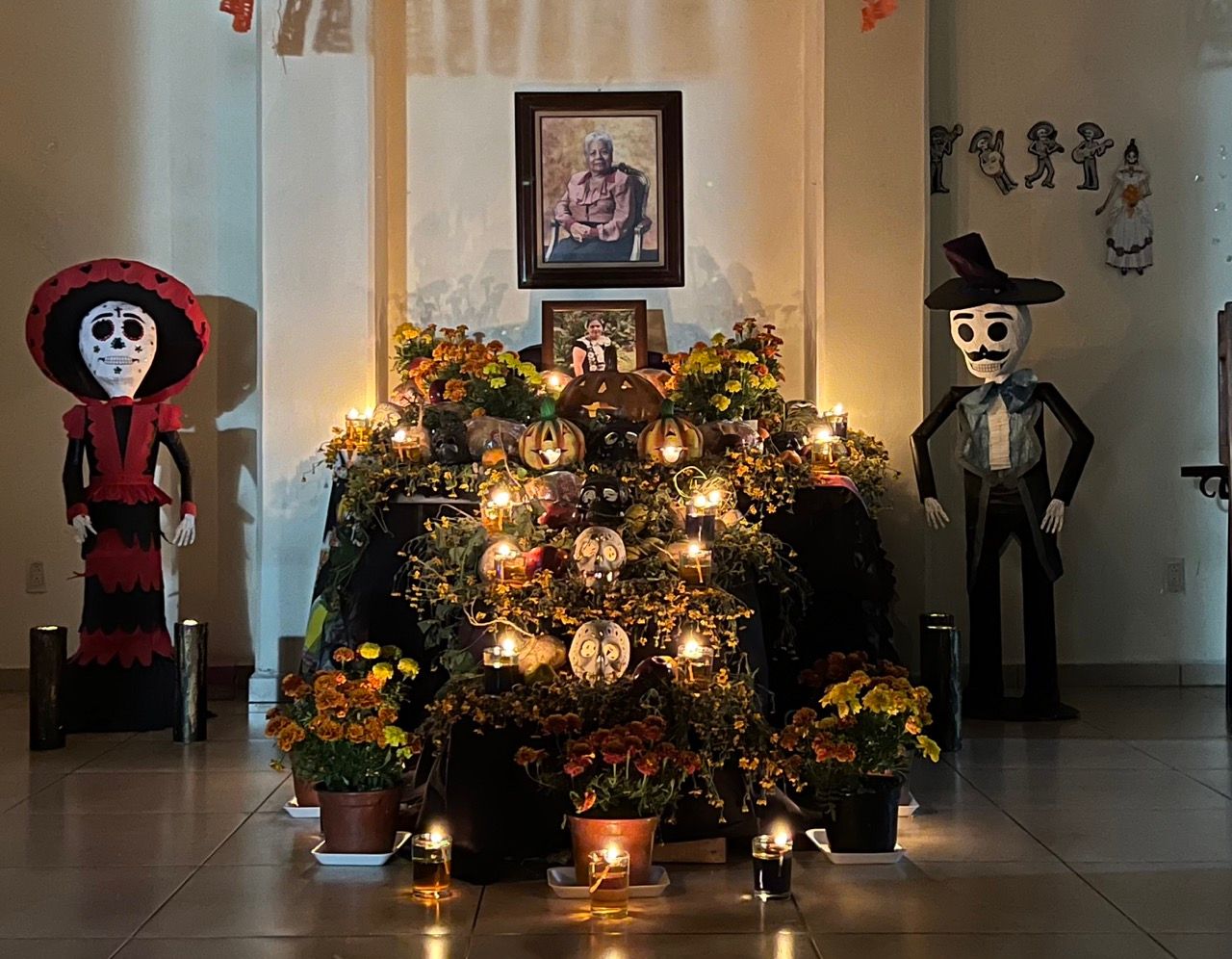
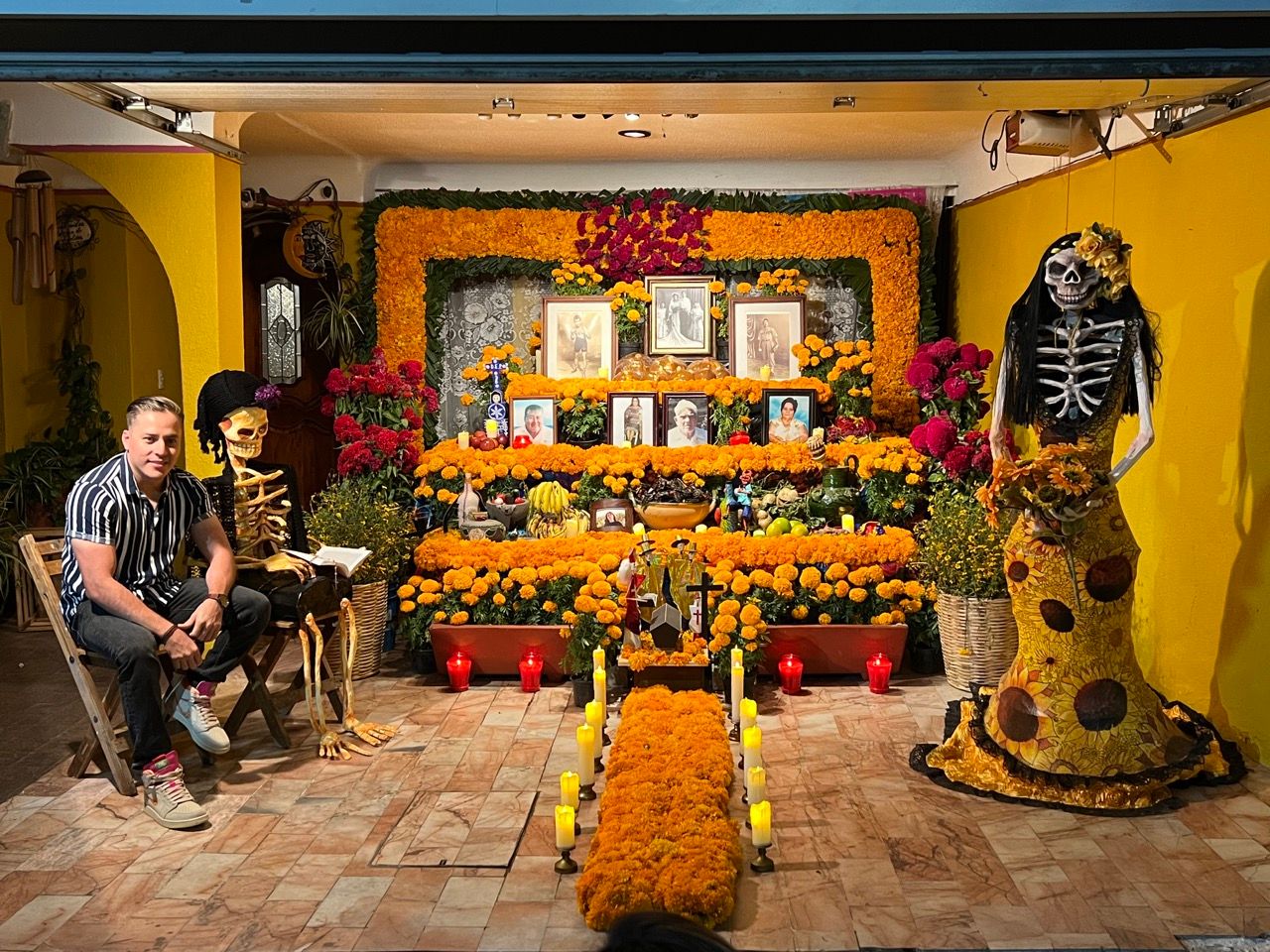
Pixar's movie Coco was wonderful to watch explains the whole thing pretty well. It's said that people die twice – once when they take their last breath, and once when they are forgotten. The festival itself is like a family reunion, but with the deceased ancestors somehow present. Beautiful altars are built at home decorated using combinations of marigold flowers and candles. The candles help the deceased find their way. Photos of the deceased are present, along with many of their favourite foods and some of their favourite items. Graves are cleaned, adorned with flowers and sometimes the altars and celebrations are actually grave-side, in the graveyard, rather than at home. The festival extends over three days, the eve, the 2nd Nov when children return, then the 3rd Nov for everyone else.
It's an unbelievable experience to walk through a graveyard and see people sitting by marigold-laden candle-lit decorated graves, telling stories, eating, sometimes drinking beer or mezcal, and even singing and dancing around their ancestors' graves. The skeletons and calacas (skeletal figurines) everywhere remind us all of the inevitability of death and our inability to cheat it.
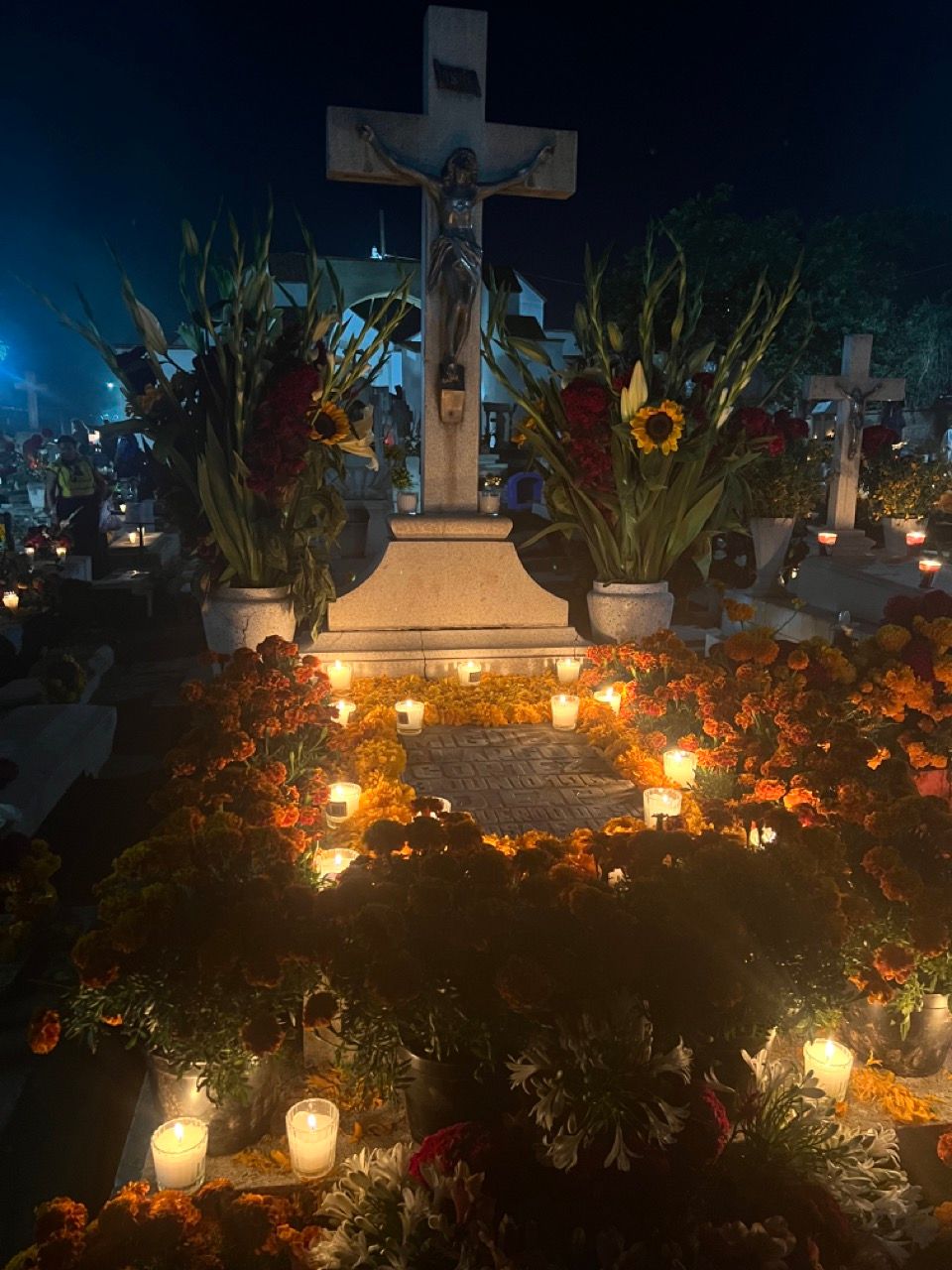
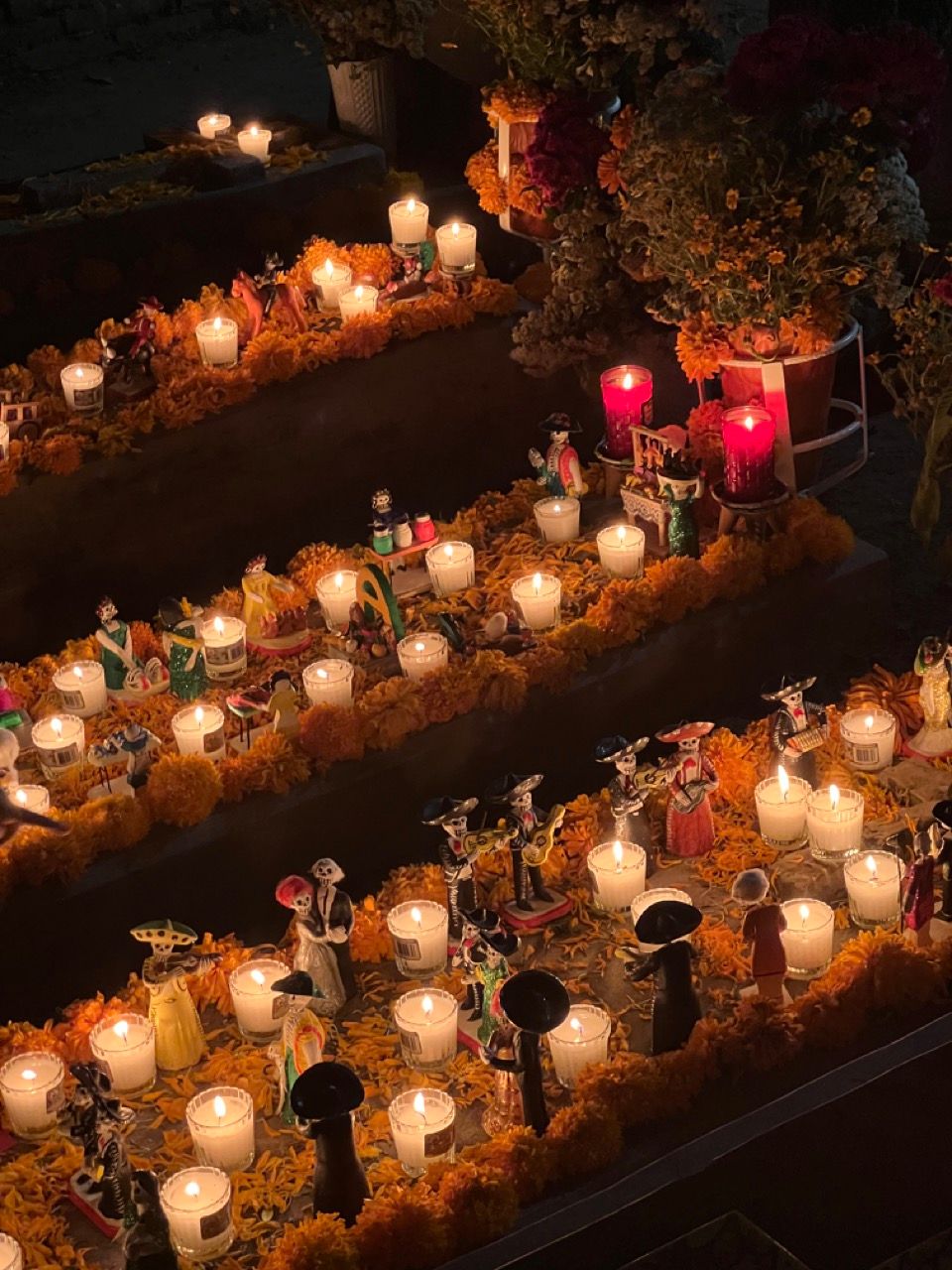
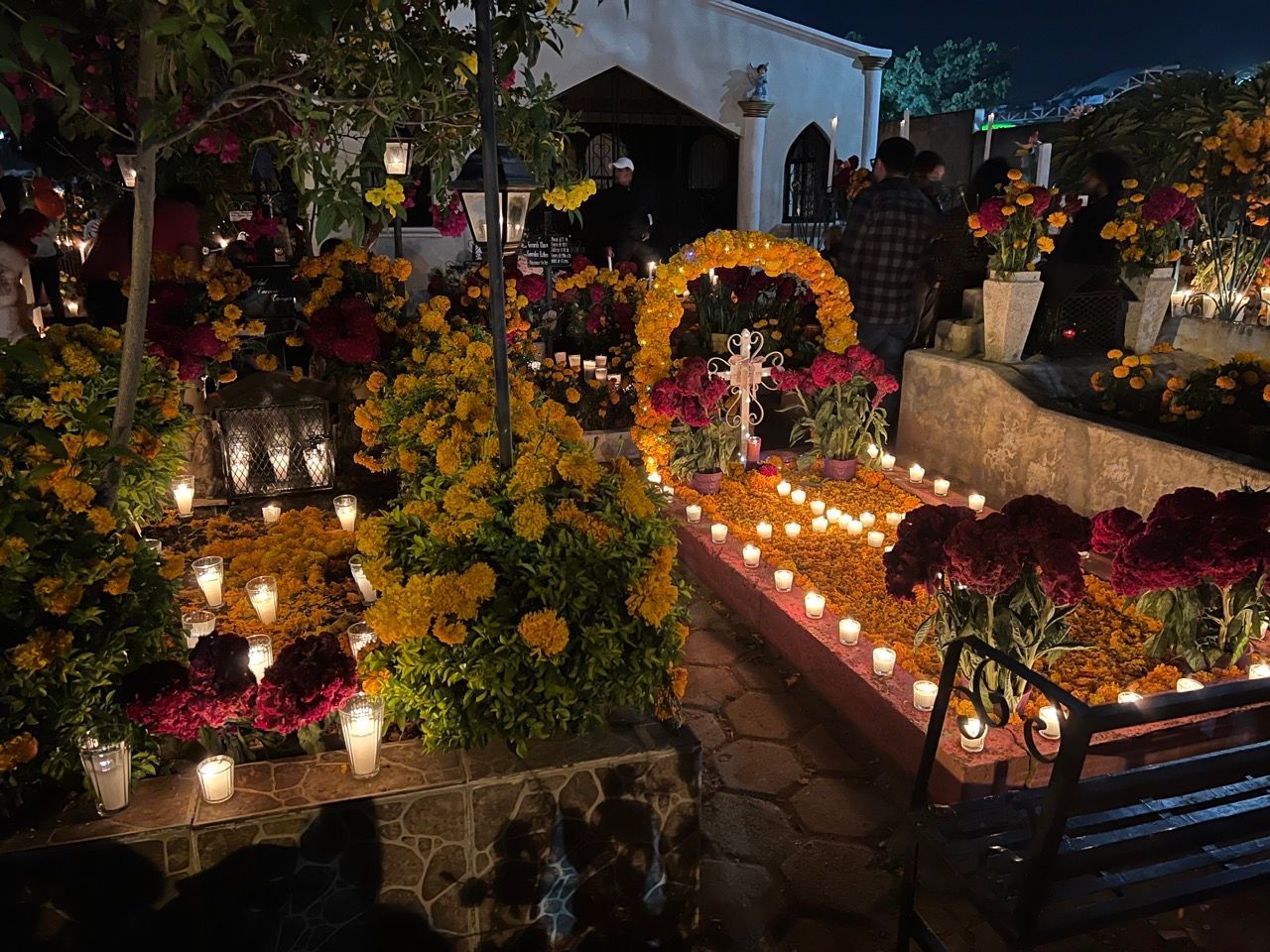
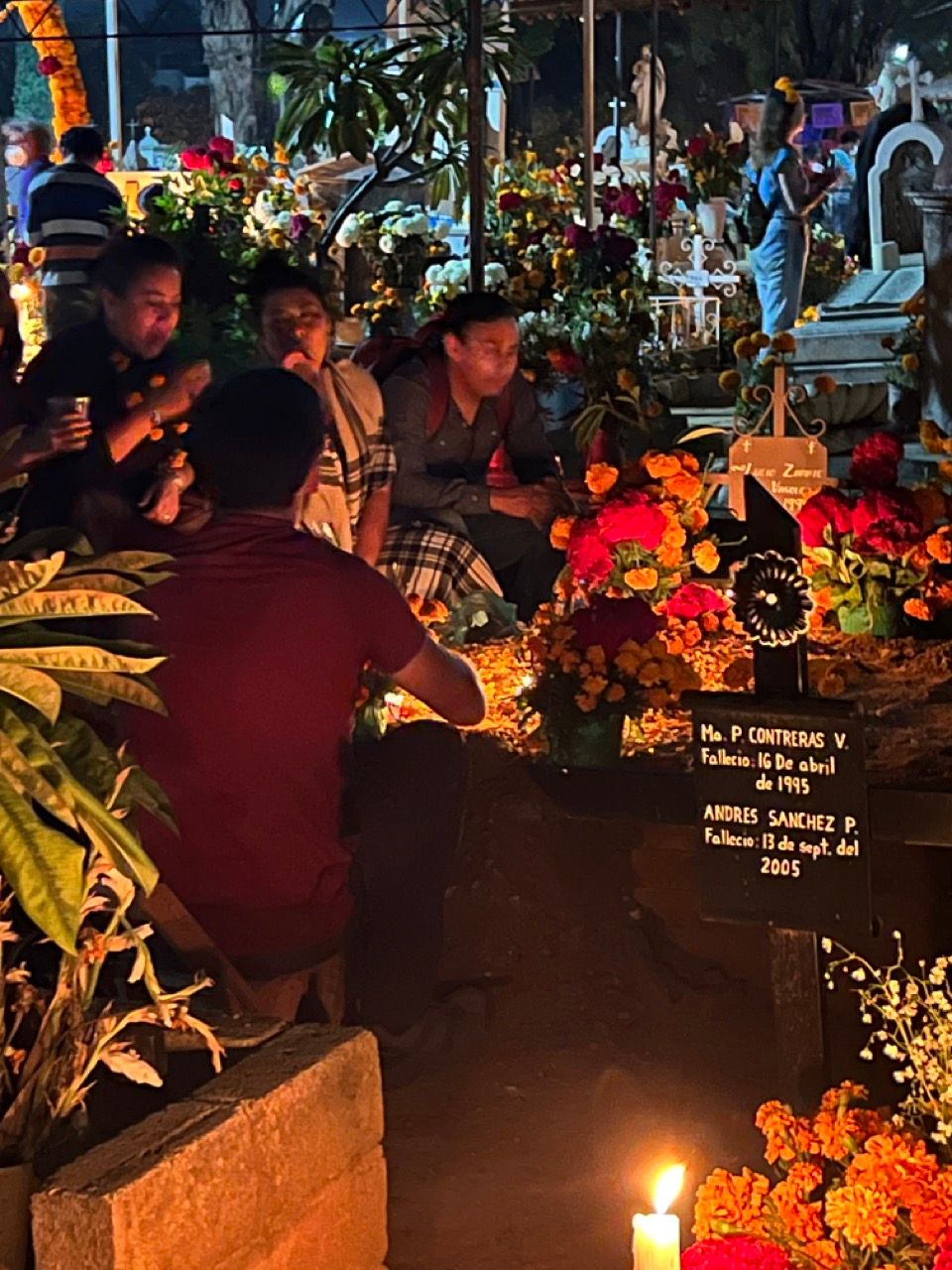
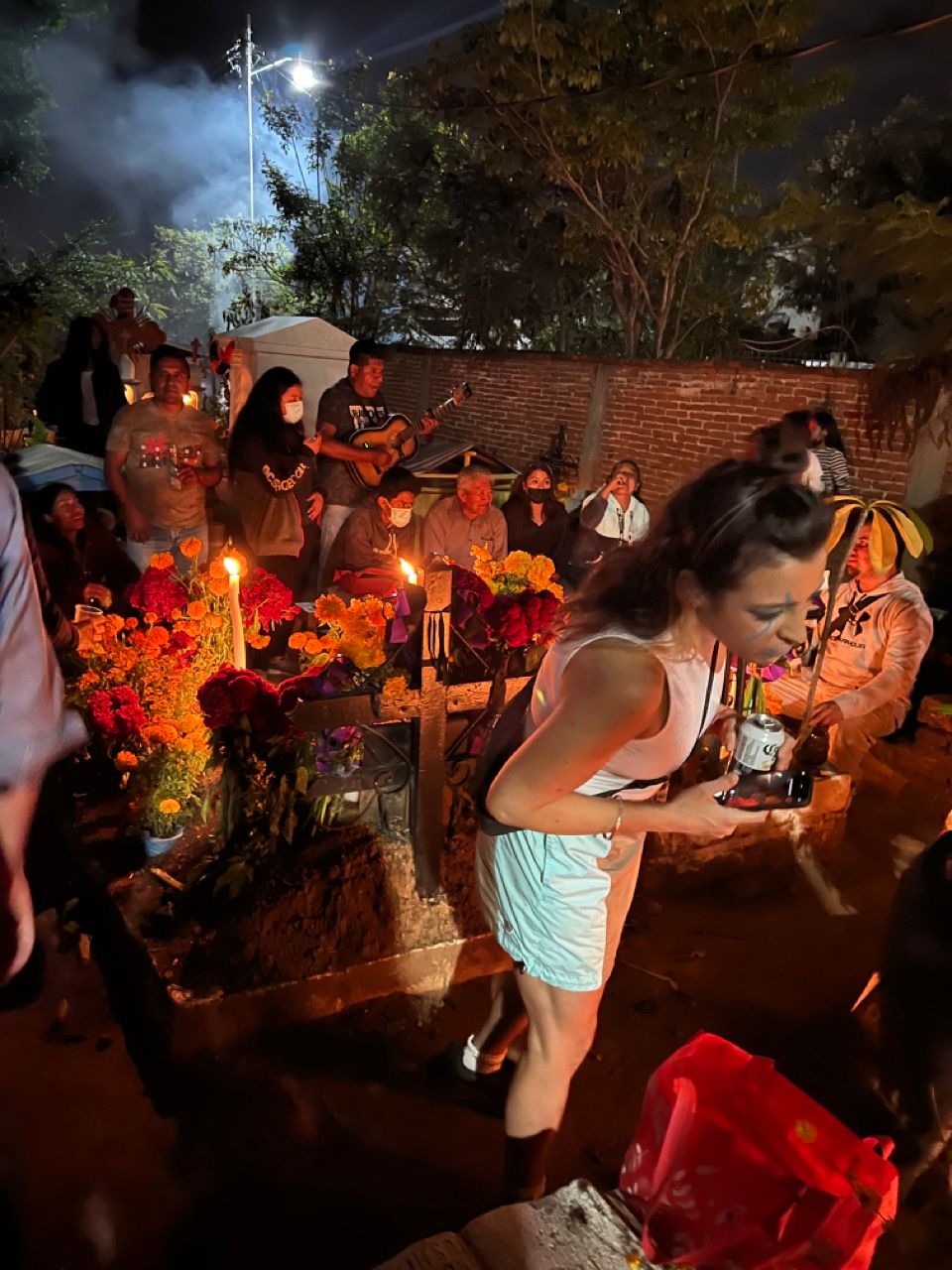
All around Oaxaca there are parades with fireworks going off in the street, parties, street festivals, street art, wall art, mariachi bands on street corners, fancy dress, even special types of bread in bakeries (pan de muerto, a sweet bread shaped according to the circle of life) and seasonal dishes. It's as though the whole town turns into one massive party and the Mexican people really know how to party: Perhaps the only people I've seen party just as hard are the Vietnamese.
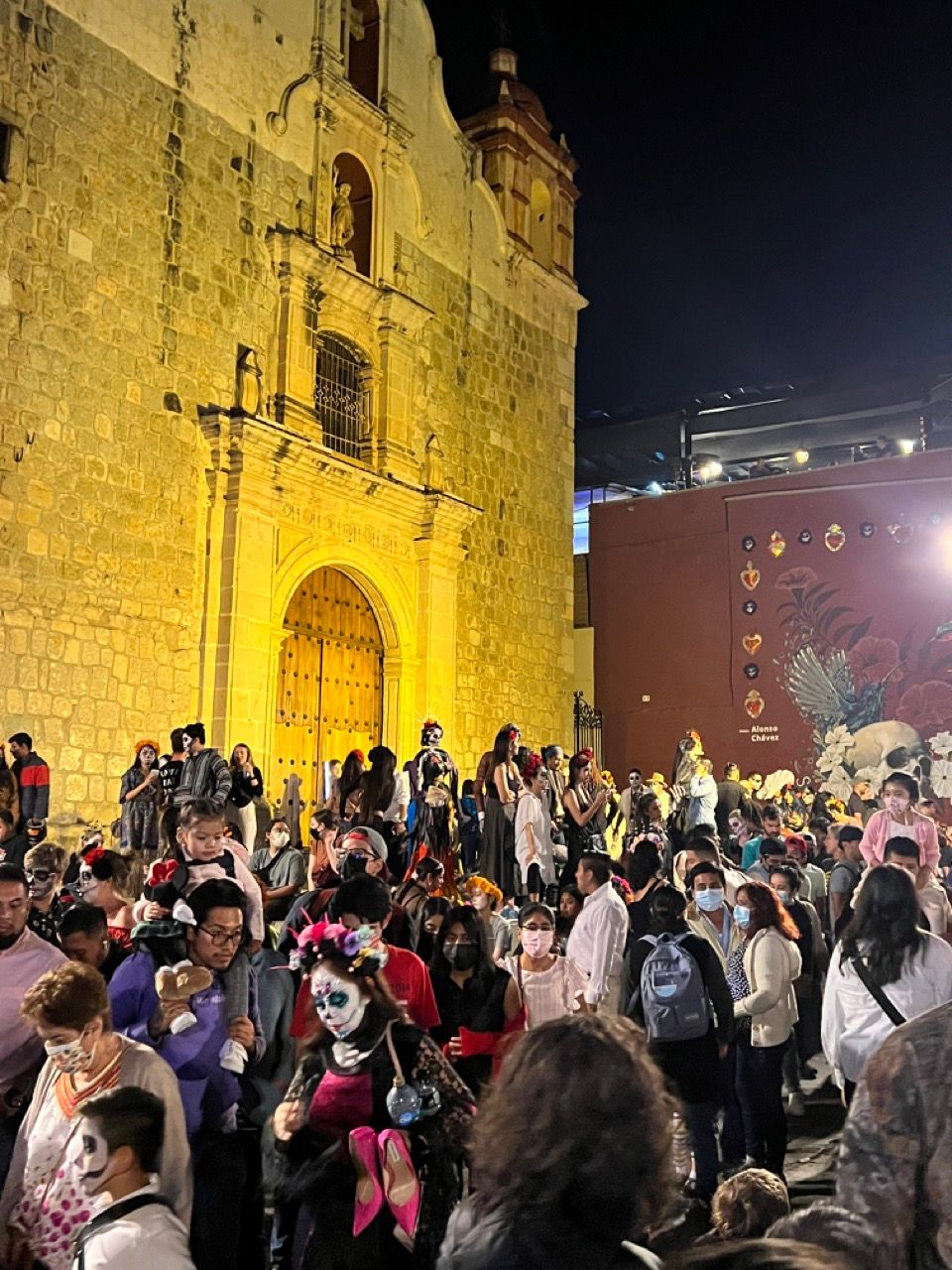
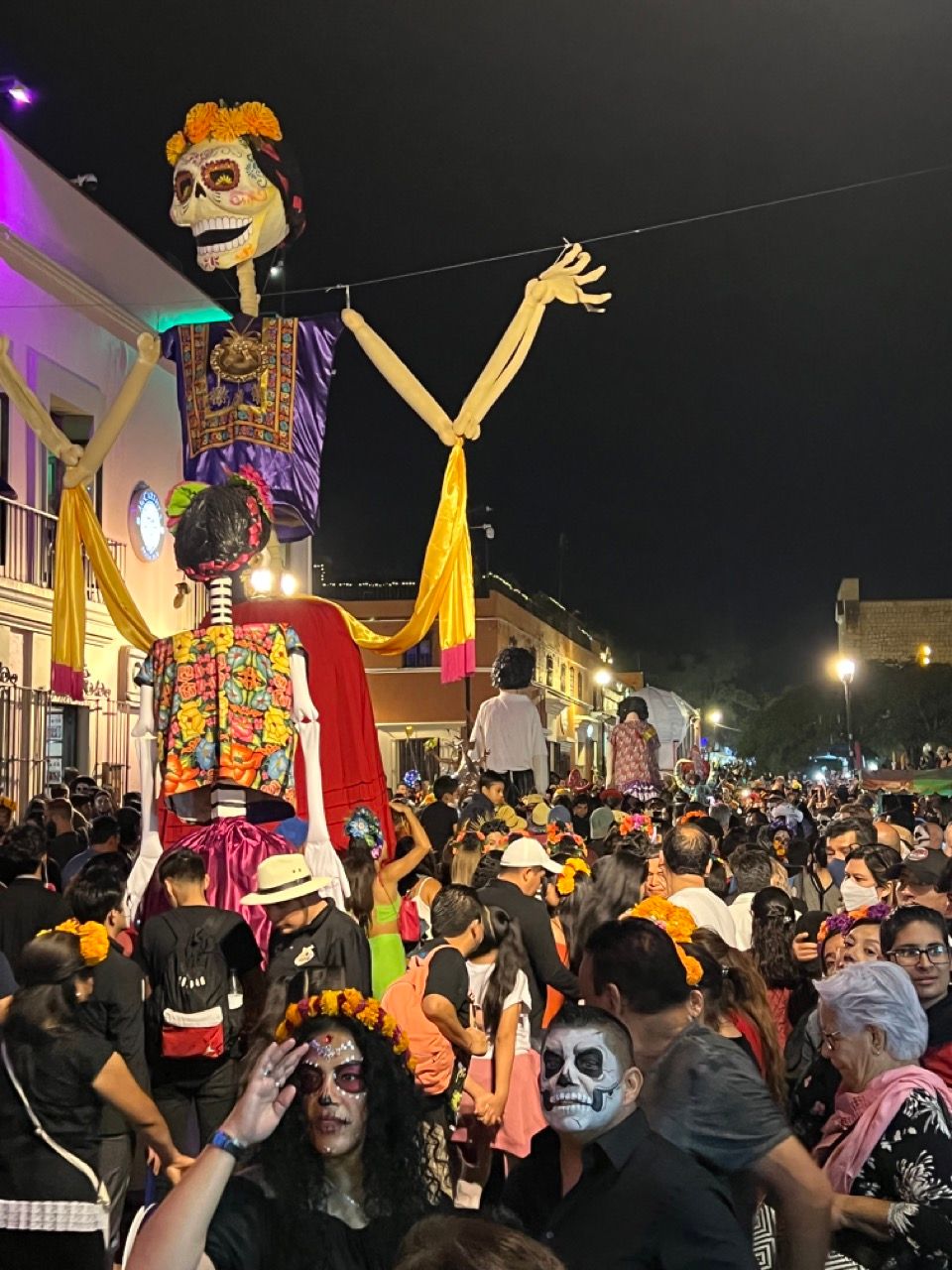
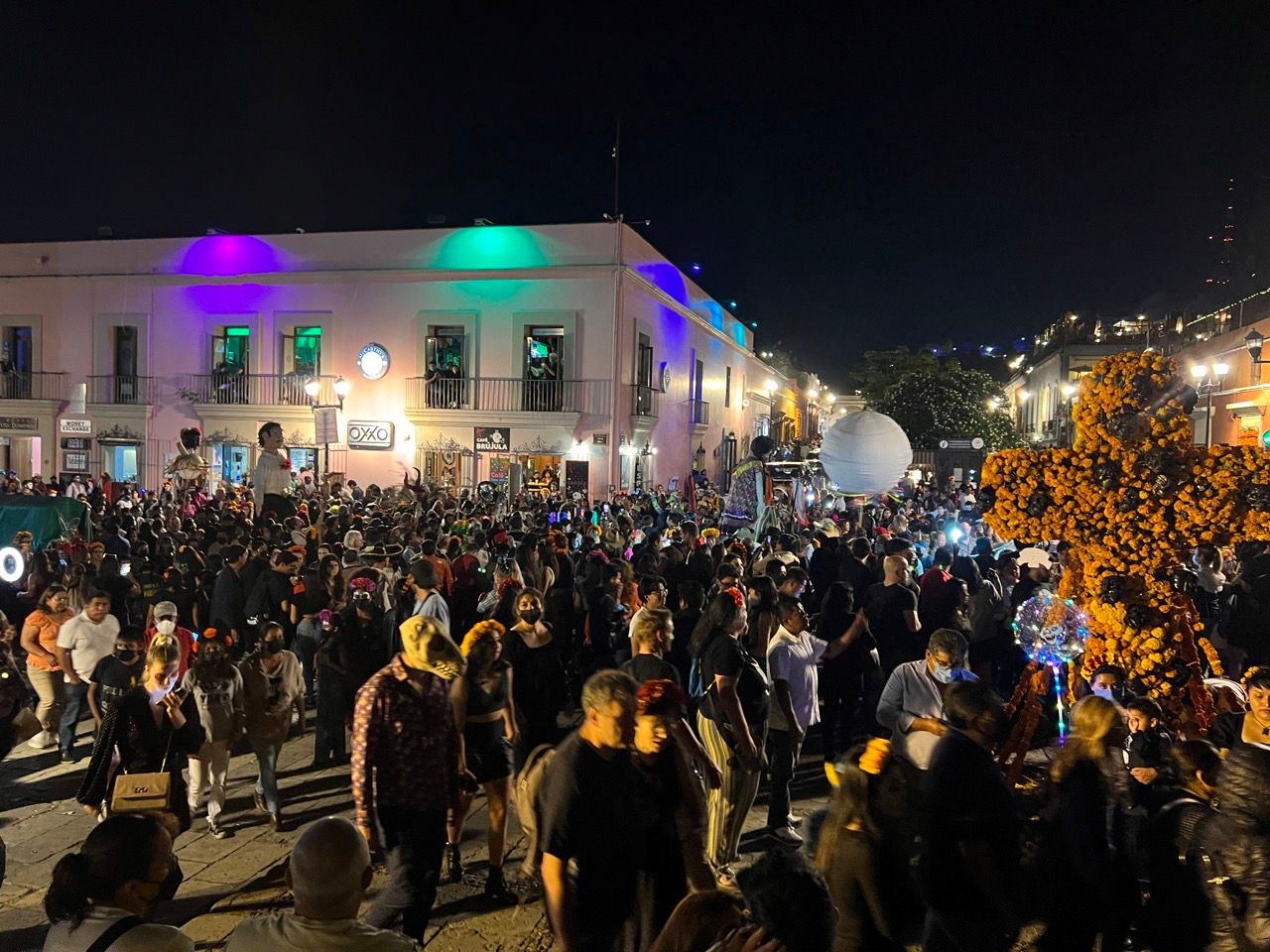
I feel among the people I met there is less fear of death and less fear of the deceased, graveyards, skeletons and such things than in my home country; and generally people don't have any trouble talking about their ancestors with pride and happiness. It also makes me think of how much I've forgotten or don't know about my parents, grandparents, great grandparents or other ancestors, all of whom are now deceased (that inevitability – I'm next in line!). I wish I could go back and learn more and find a way to pass the stories on.
I feel so lucky to have experienced this festival, thank you so much to Othon, his wife and two lovely daughters for inviting me and showing me around Oaxaca, explaining the traditions, and even taking me to mezcal distilleries, art studios, ceramic studios, countless amazing restaurants, ancient ruins and petrified waterfalls, all in 3 days. Mexican culture is truly amazing; apologies for any inaccuracies in my understanding above, please send corrections.
In one night on my Mexico trip, I did have a dream about my grandma, and when I woke up, just smiled with fond memories and went back to sleep. Perhaps the dead are never really dead until they are forgotten.
